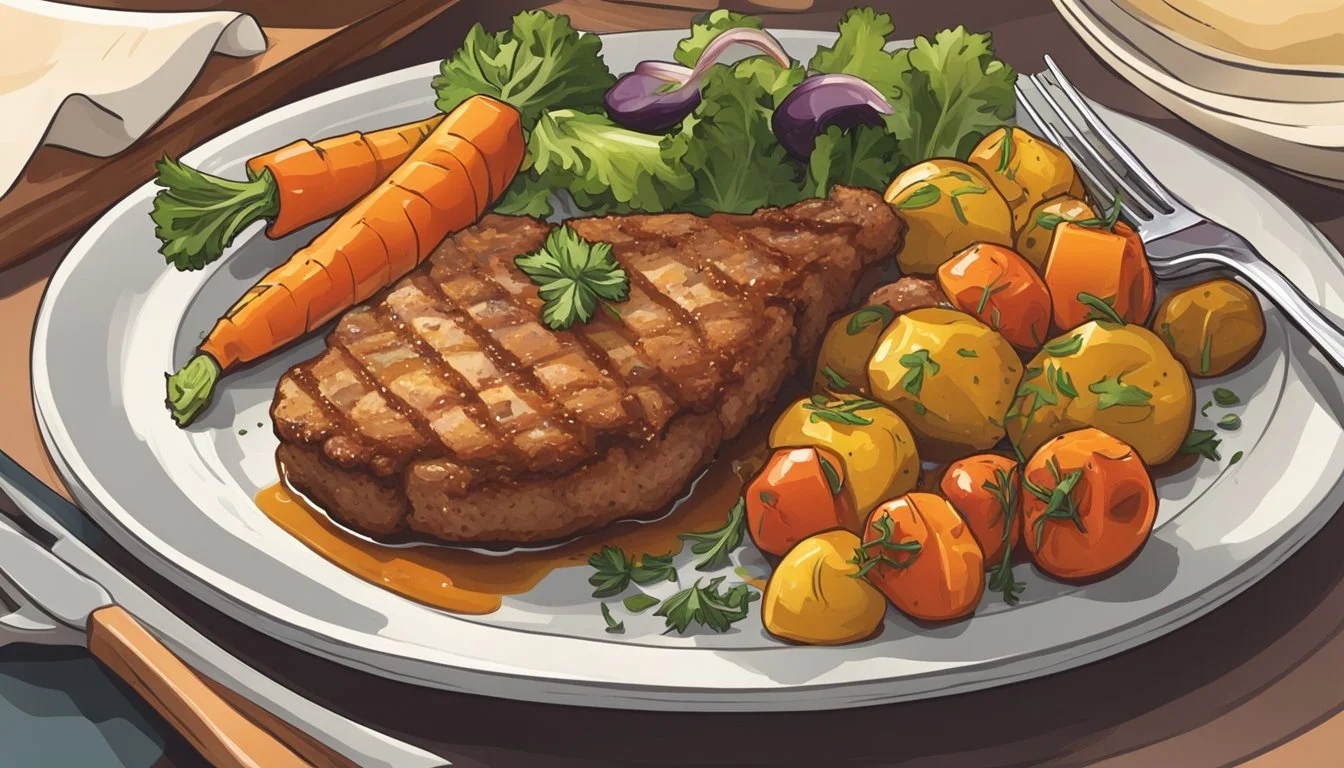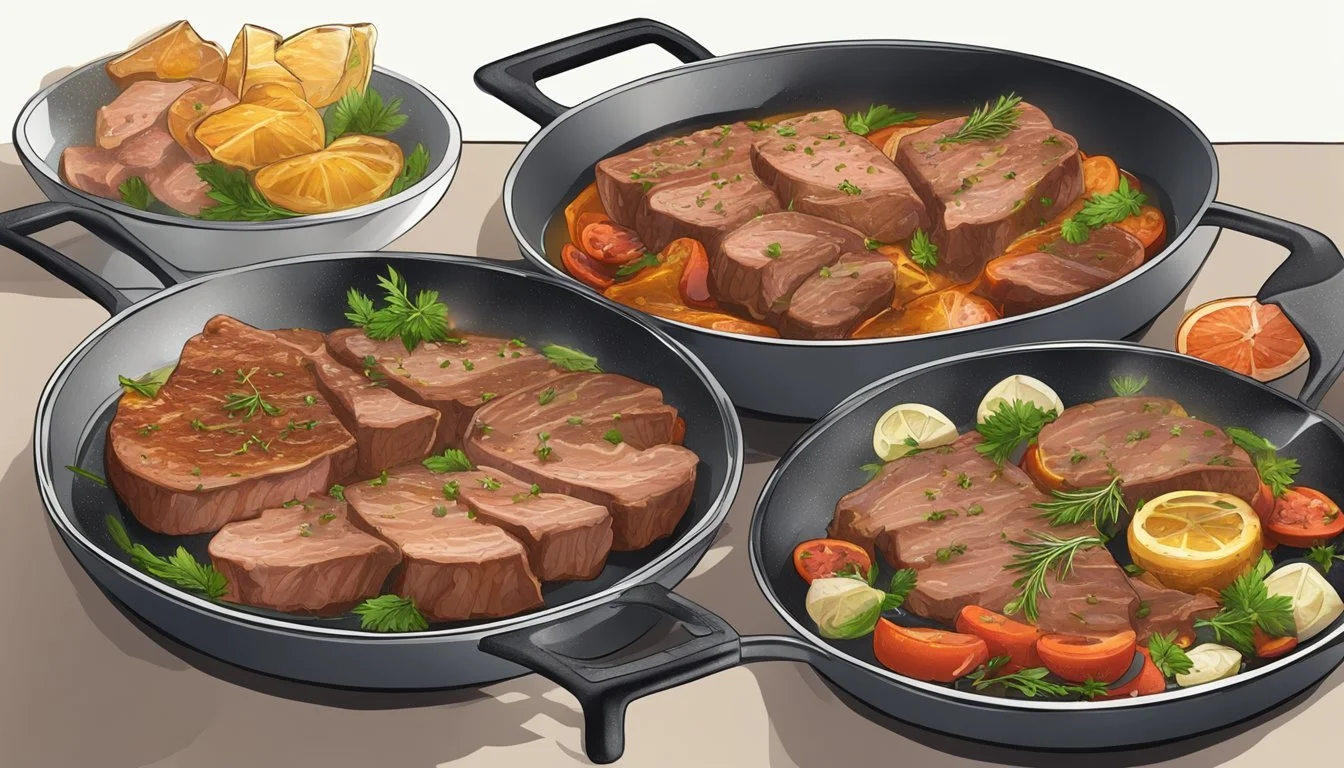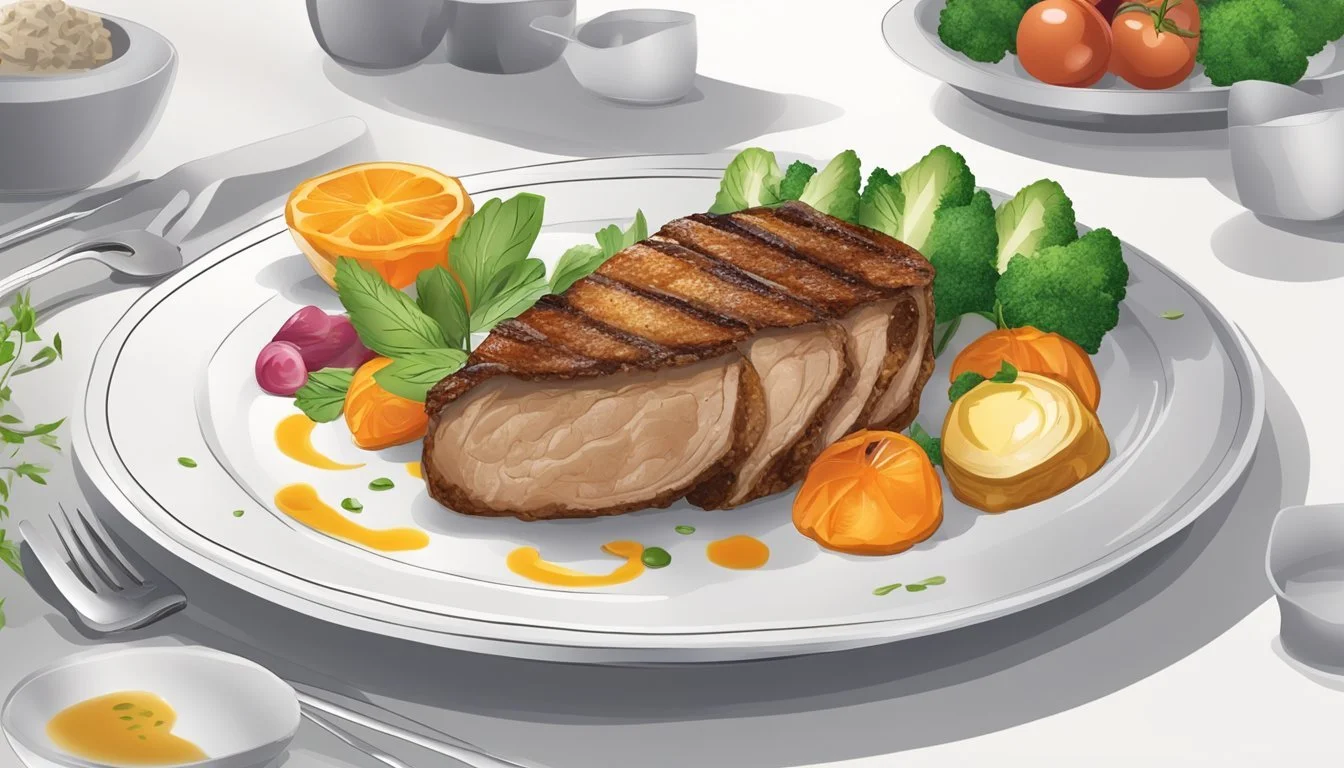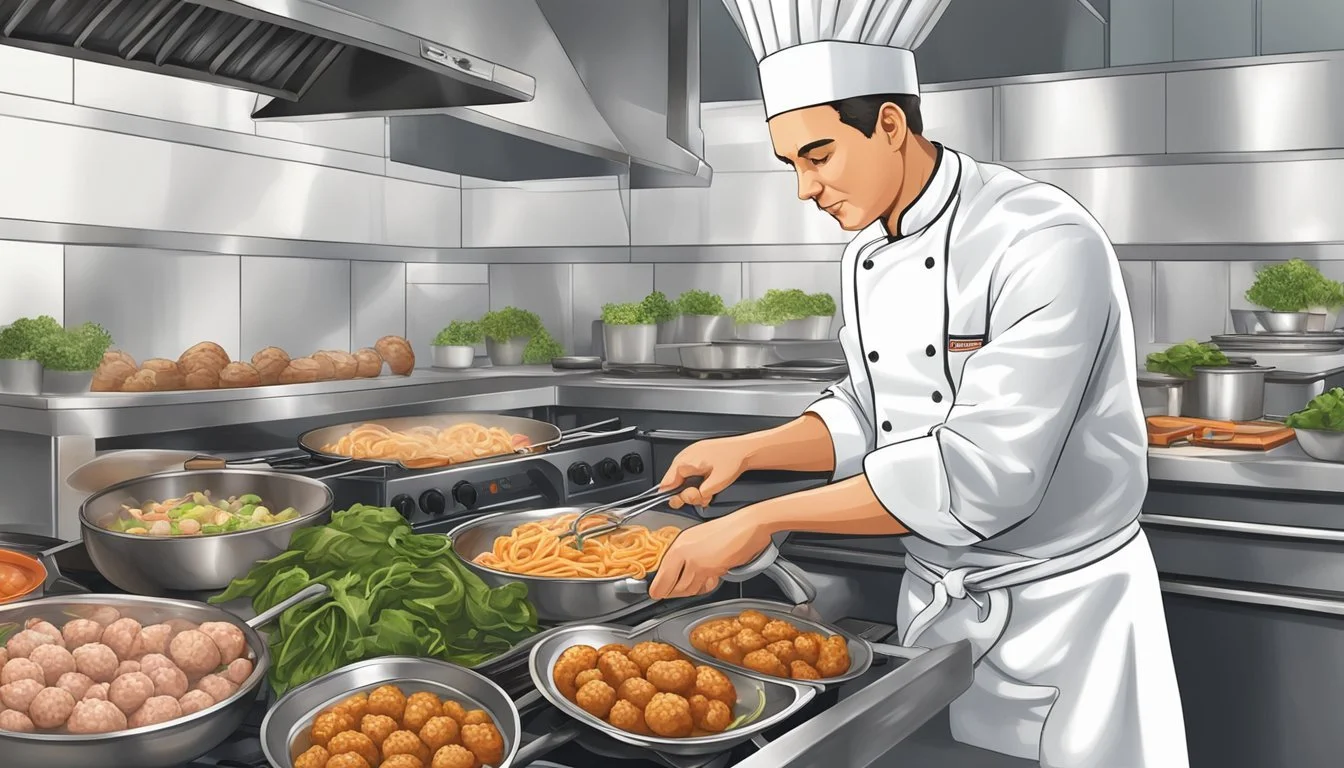How do you eat veal?
Exploring Culinary Techniques and Recipes
Veal, the meat from young calves, is a highly regarded ingredient in many cuisines around the world due to its tender texture and mild flavor. It can be prepared in a variety of ways, from pan-searing to roasting or simmering. The culinary approaches to veal are as diverse as the dishes that feature it, ranging from classic Italian osso buco to French escalopes. When including veal in a diet, its nutritional profile is also a point of consideration, as it is a source of lean protein that can aid in muscle building and maintenance.
Eating veal can be an experience that goes beyond mere taste, often involving traditional cooking methods and recipes passed down through generations. The meat usually requires careful cooking to preserve its delicate texture and ensure it retains its characteristic pink hue in the center, especially when preparing cuts like veal tenderloin. Methods such as slow simmering in a low oven with liquid allow for the development of flavor while ensuring the meat stays moist and tender. This approach reflects the general principle that veal, when cooked with consideration, lends itself to a variety of satisfying and nutritious dishes.
Understanding Veal
Veal is a distinctive type of meat with a range of cuts and a delicate flavor profile, but it also presents ethical considerations and nutritional aspects that should be understood by consumers.
What Is Veal?
Veal is the meat derived from young calves, typically dairy breeds. These calves are generally slaughtered at a young age ranging from 2 weeks to 8 months. Veal is known for its soft texture and mild flavor, which is attributed to the age of the animals at the time of slaughter.
Types of Veal
There are various categories of veal, determined by the age and diet of the calf:
Milk-Fed Veal: Calves that consume primarily milk; the meat is light pink and highly tender.
Grain-Fed Veal: Older calves that have been introduced to grain, resulting in darker meat.
Free-Range Veal: Calves that have been allowed to roam and may have more muscle development.
Rose Veal: Produced from calves that are slightly older and fed on a diet of milk and grass or grain.
Nutritional Profile
Veal is a lean source of protein, offering essential vitamins and minerals. It is generally lower in fat compared to mature beef. The nutritional content varies depending on the cut and diet of the calf, with milk-fed veal being leaner and grain-fed veal having slightly higher fat content.
Nutritional Breakdown of Veal (Per 100g):
Calories: 176 kcal
Protein: 20 g
Fat: 10 g
Cholesterol: 80 mg
Iron: 0.8 mg
Ethical and Dietary Considerations
Ethical considerations are paramount in discussions about veal due to past practices involving crates and limited mobility. Modern ethical standards often involve:
Improved living conditions, such as banning of crates and guaranteeing space for movement.
Humane treatment, with many veal producers adopting free-range farming practices.
Absence of added hormones on many farms, aligning with consumer demand for more natural products.
From a dietary standpoint, individuals seeking high-quality protein may include veal as a component of their diet. However, it is important for consumers to make informed choices based on not only nutritional content but also ethical practices and personal values related to animal welfare and environmental impact. Veal is considered an expensive meat choice due to the intensive care required for raising calves.
Buying and Storing Veal
When purchasing veal, it is important to choose quality cuts, be aware of the different types of veal available, and understand the proper methods for storing it to maintain freshness and safety.
Selecting Quality Veal
When choosing veal, look for meat with a pale pink color and firm texture, indicating freshness. Veal should be purchased from a reputable butcher or a farmer known for adhering to safety regulations, including those of the USDA, to ensure the meat has been handled properly from farm to market.
Cuts of Veal
Veal is available in various cuts, each suited to different cooking methods:
Veal Chop: Thick, tender cuts ideal for grilling or pan-searing.
Ground Veal: Used for making meatballs, burgers, or filling.
Veal Shank: Often used in osso buco.
Veal Roast: Large cuts good for roasting, including the rib or shoulder.
Veal Chops: Smaller than a roast, perfect for quick cooking methods.
Veal Steak: Thinly sliced, suitable for recipes like veal Milanese.
Sweetbreads: Thymus or pancreas of the calf, considered a delicacy.
Veal Short Ribs: Rich in flavor, best for slow-cooking methods.
Stew Meat: Small chunks of veal, ideal for stews and braises.
For more sophisticated presentations, some cuts may come "frenched," where the meat is trimmed from the end of the rib or chop to expose the bone.
Storage Tips
Proper storage of veal is crucial to prevent spoilage and foodborne illness:
Refrigerate veal at temperatures below 40°F.
Wrap cuts like veal chops or steak in airtight packaging or vacuum-sealed bags.
Store ground veal or stew meat in tightly sealed containers.
For long-term storage, freeze veal at 0°F. Thawing should be done in the refrigerator, estimating 4 to 7 hours per pound for large roasts, 3 to 5 hours per pound for a small roast, and approximately 12 hours for 1-inch thick rib or shoulder chops. Ground veal defrosting time varies based on thickness.
Never refreeze veal that has been thawed.
Preparation Methods
Proper preparation of veal is crucial to enhance its flavor and tenderness. This section delves into the initial preparation, seasoning, tenderizing, and cooking methods that bring out the best in veal dishes.
Basic Preparation
Before cooking, veal cuts should be brought to room temperature to ensure even cooking. It is important to pat the veal dry with paper towels to remove excess moisture, which aids in achieving a better sear.
Seasoning Veal
A simple seasoning of salt and pepper can suffice to accentuate the natural flavor of the veal. However, incorporating herbs like rosemary or thyme, spices, and aromatics like garlic adds complexity. For veal recipes like saltimbocca, fresh sage and a slice of prosciutto contribute to the dish's signature taste.
Tenderizing Techniques
Tenderizing can be achieved through mechanical methods, like using a meat mallet on tougher veal cuts. Alternatively, marinating with ingredients like mustard or herbs can help break down the muscle fibers, not only tenderizing the meat but also infusing it with flavor.
Cooking Methods Overview
There are various techniques to cook veal:
Dry Heat:
Roasting: Ideal for larger, tender cuts. Season and roast in a preheated oven until it reaches the desired doneness.
Pan-searing: Excellent for veal steaks or chops; sear in hot olive oil or butter for a caramelized crust.
Grilling: Perfect for cutlets and chops, grilled over high heat for quick cooking and a smoky flavor.
Moist Heat:
Braising: Suitable for tougher cuts; cook slowly with liquid in a covered pot.
Each method should be selected based on the specific veal cut and desired texture and flavor.
Cooking Techniques
Selecting the right cooking technique is essential when preparing veal, as it is a tender, and sometimes expensive, meat. Whether cooked over dry heat to create a caramelized crust or using moist heat methods to ensure it's fully cooked while maintaining tenderness, the right approach can enhance the delicacy's natural flavors.
Grilling Veal
Grilling imparts a smoky flavor to veal chops and steaks. It's best to grill over medium-high heat to achieve a charred outside while keeping the inside juicy. Veal should be turned only once to avoid drying out. Marinating or seasoning before grilling adds extra taste.
Braising Veal
Braising involves cooking veal, especially cuts with more connective tissue like the shank, low and slow in a flavored liquid such as stock, wine, or cream-based sauce. This moist heat method transforms tougher cuts into succulent, tender meals, enhancing the flavors throughout.
Roasting Veal
When roasting veal in the oven, it’s ideal to use dry heat to cook larger cuts like veal roast uniformly. An initial high-heat sear followed by a lower temperature will ensure a moist interior and a nicely browned outer crust. Veal should be rested before carving to reabsorb the juices.
Pan-Frying and Sautéing
Pan-frying and sautéing veal quickly over high heat create a flavorful crust. Veal cutlets (What wine goes well with veal cutlets?) and thin slices benefit from this technique as they cook rapidly and remain tender. Utilizing oils or butter adds richness to the dish.
Stewing and Simmering
For stews and slow-cooked dishes, veal short ribs and other stewing cuts are simmered in a liquid base. Veal becomes extremely tender when it's stewed or simmered over low heat for an extended time in a combination of stock, vegetables, and herbs. This method is particularly popular for heartier meals.
Recipes and Serving
Veal can be prepared in numerous ways, ranging from classical recipes that have stood the test of time to modern interpretations that introduce new flavors and techniques. Whether seared, roasted, or breaded, veal serves as a versatile canvas for a variety of seasonings and sauces. It's important to cook it properly to achieve the desired tenderness, whether it's rare or medium-rare.
Classic Veal Recipes
Veal Milanese and Wiener Schnitzel are timeless dishes that celebrate the delicate flavor of veal. A classic Veal Milanese involves breading veal cutlets in a three-step process: dredging in flour, dipping in egg, and coating with breadcrumbs, then frying to a golden crisp. Traditional schnitzel follows a similar process but is often associated with veal or pork.
Saltimbocca, an Italian specialty, showcases veal with a slice of prosciutto and sage, sautéed in butter and often served with a wine-reduction sauce. Veal shanks, on the other hand, shine in the slow-cooked, Milanese Ossobuco, braised with tomatoes and a rich stock until fall-apart tender.
Modern Takes on Veal
Contemporary chefs often put a twist on classic veal recipes by incorporating novel ingredients and techniques. Veal tenderloin, for instance, may be encrusted with exotic mushrooms or herbs before pan-searing and finishing in the oven to a perfect medium-rare. This method accentuates veal’s tenderness and complements it with umami flavors.
Creative presentations of veal, such as veal chop stuffed with spinach and cheese or veal steak with a coffee-infused marinade, reflect modern culinary innovations. Seasonings like porcini powder offer deep, rich notes, while colorful vegetable purées add both vibrancy and taste to the plating.
Serving Suggestions
When serving veal, the accompaniments are as crucial as the main dish. A balanced dish might include a velvety cream sauce or a tangy tomato-based sauce to enhance the veal’s subtle taste. Veal sweetbreads have a rich profile that pairs well with acidic components or a light, creamy sauce.
Cut of Veal Suggested Sauce Suggested Side Dish Veal Cutlet Lemon-Butter Sautéed Greens Veal Shank Tomato-Based Risotto or Polenta Veal Chop Creamy Roasted Vegetables Veal Steak Red Wine Reduction Potato Gratin
To further elevate the dish, veal can be garnished with fresh herbs or citrus zest. It's important to let the veal rest adequately before serving to ensure ultimate tenderness and flavor distribution.
Pairings and Complements
When preparing veal, choosing the right pairings is crucial to enhance its delicate flavor. From wine selections to complementary side dishes and the harmonious blend of herbs and spices, a well-rounded veal dish balances richness with subtlety.
Wine and Beverage Pairings
Selecting an appropriate wine or beverage to accompany veal can elevate the dining experience. A glass of wine with balanced acidity and understated fruit notes complements veal's mild flavor.
Red Wines: For red wine lovers, a light Pinot Noir or an Italian Barbera offers the right amount of body without overwhelming the meat.
White Wines: A Chardonnay, particularly one that is not overly oaked, or a dry Riesling can match veal's texture and complement its creamy sauces (What wine goes well with creamy sauces?).
Non-Alcoholic Options: Sparkling water with a lemon twist or a rose-infused iced tea can provide a refreshing counterpoint to the richness of veal.
Side Dishes
The side dishes served with veal should complement its texture and flavor while providing contrast in the meal.
Vegetables: Grilled or roasted artichokes, eggplants, and tomatoes add a desirable textural contrast.
Starches: Creamy risotto, particularly Risotto Milanese, and buttery mashed potatoes are classic accompaniments that absorb veal's juices and sauces.
Breads: A slice of crusty garlic bread can be a satisfying addition, offering both a crunch and a flavor boost from the garlic and butter.
Herb and Spice Affinities
The right herbs and spices can accentuate veal's subtle taste without dominating it.
Herbs: Thyme, sage, and rosemary are robust herbs that, when used sparingly, do not overpower the meat.
Spices: Nutmeg and white pepper provide a warm, aromatic quality that complements cream-based sauces often served with veal.
Garlic and Butter: These are essential for creating depth of flavor; garlic should be used to infuse dishes subtly, while butter provides a silky finish.
By paying attention to these pairings and complementary flavors, one can create a veal dish that is sophisticated and satisfying.
Creative Uses for Leftover Veal
When one has leftover veal, transforming it into an array of delectable dishes showcases both culinary creativity and resourcefulness. Whether starting with veal chop, shank, roast, or any other cut, options abound for repurposing these leftovers.
Stews and soups offer a splendid way to utilize stew meat. One might simmer the veal with vegetables, broth, and herbs, allowing flavors to meld and the meat to become tender. For an Italian twist, minced veal roast can be folded into a rich marinara sauce, best served over pasta or layered into lasagna.
Stir-fry represents another quick and flavorful technique. The key is slicing the veal into thin strips, ensuring they cook rapidly and absorb the medley of sauces and vegetables accompanying them in the wok.
Leftover veal steak or chop finds new life when transformed into veal Milanese. Simply bread the slices with a mixture of breadcrumbs and parmesan, then pan-fry until crispy. Similarly, veal can be incorporated into a hearty meatloaf or shaped into savory burgers. Both use minced leftovers as the base, mixed with binders like eggs and breadcrumbs, then formed to one's preference before cooking.
As a specialty item, veal sweetbreads can be sautéed with garlic and herbs, served over creamy polenta or tucked into a warm baguette. With veal short ribs, one could shred the meat after slow-cooking and create robust sandwiches capped with coleslaw.
It's worth noting that leftover shanks can be deconstructed, their meat shredded for use in tacos or quesadillas, enhanced by bold seasonings and melted cheese.
In brief, the versatility of veal makes it suited for a variety of leftover transformations, each allowing the unique qualities of the meat to be savored in a new light.
Health and Nutritional Perspectives
Veal, recognized for its lean quality, is a high-protein meat option with a tender texture due to fine marbling. As a red meat (What wine goes well with red meat?), it is a source of iron which is crucial for oxygen transport in the body. Different cuts of veal provide varying levels of nutrients, but they generally contain less fat and fewer calories compared to many other red meats.
Nutrient Benefit Protein Essential for muscle repair and growth Iron Supports oxygen transportation in the bloodstream Fat Offers energy; lower in veal means fewer calories
One should also consider the vitamins that veal supplies. It is a good source of vitamin B-12, crucial for nerve function and the production of DNA, and niacin (vitamin B3), which aids in converting food into energy. Notably, a 4-ounce serving of veal can provide up to 51% of the Recommended Dietary Allowance (RDA) for niacin.
Veal's nutritional profile positions it as a beneficial component of a balanced diet when consumed in moderation. Its marbling, the intramuscular fat, contributes to the flavor without excessively increasing caloric content. Moreover, the lean nature of veal makes it a fitting choice for health-conscious individuals looking to incorporate red meat into their diets without an overabundance of fat and calories.







